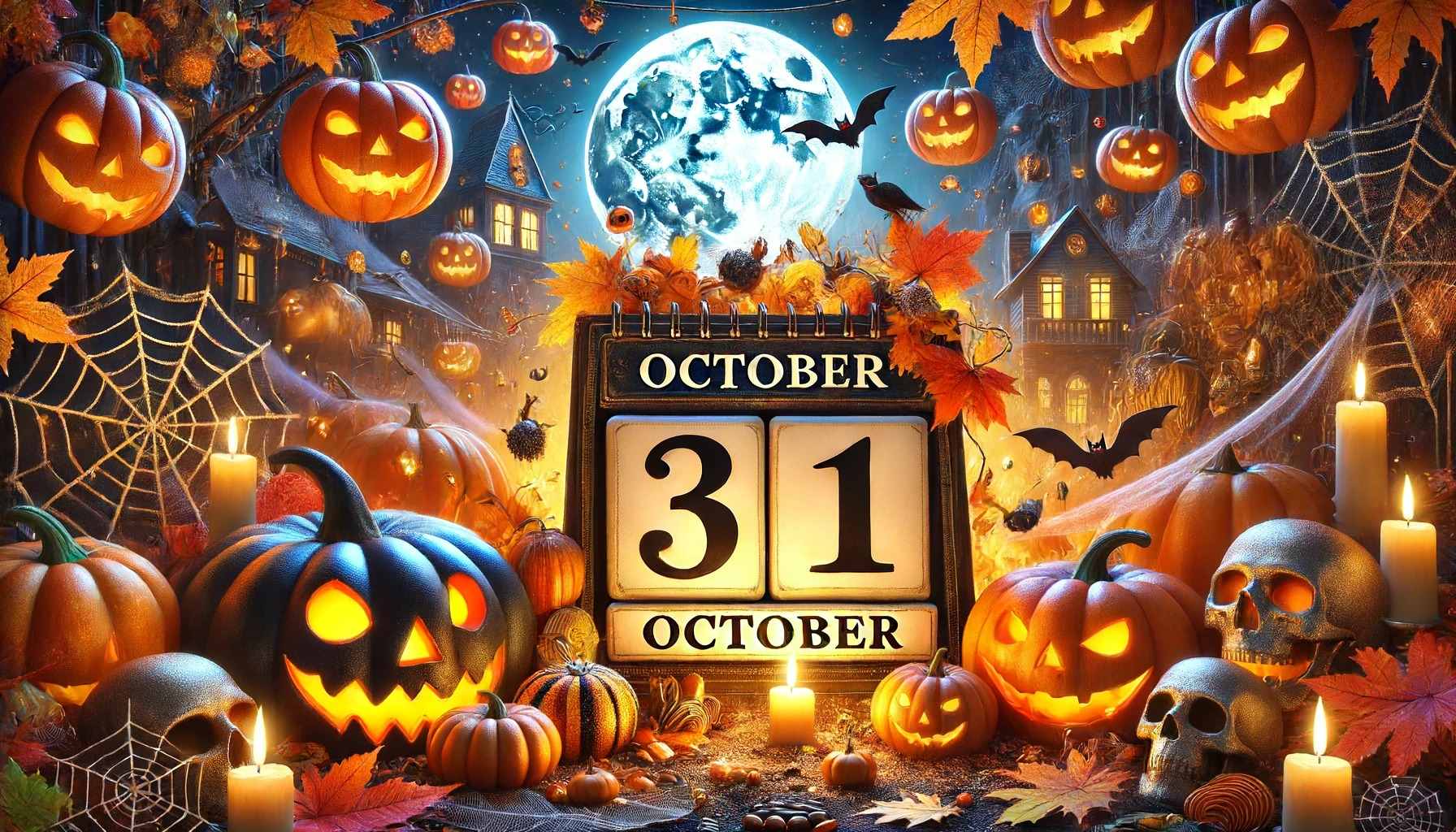
October 31st is a date that sparks excitement, mystery, and a touch of spookiness. Why is October 31st so special? This day, famously known as Halloween, has a rich history and a mix of traditions that make it unique. From ancient Celtic festivals to modern-day trick-or-treating, October 31st has evolved into a celebration enjoyed by millions. People dress in costumes, carve pumpkins, and tell ghost stories. But there's more to this date than just Halloween. It marks significant events in history, cultural milestones, and even some quirky facts. Let's dive into 19 intriguing facts about October 31st that will surprise and entertain you.
Key Takeaways:
- Halloween has ancient Celtic roots and evolved from the festival of Samhain. It's celebrated worldwide with traditions like trick-or-treating and pumpkin carving.
- Halloween isn't just about costumes and candy; it's a global celebration with unique traditions in Mexico, Ireland, and Japan. It's also a big part of pop culture, with iconic movies and TV shows.
Halloween Origins
October 31st is best known for Halloween, a holiday with ancient roots and fascinating traditions. Let's explore some intriguing facts about this spooky day.
-
Halloween traces back to the ancient Celtic festival of Samhain. Celebrated over 2,000 years ago, Samhain marked the end of the harvest season and the beginning of winter. Celts believed that on this night, the boundary between the living and the dead blurred.
-
The name "Halloween" comes from "All Hallows' Eve." This is the evening before All Saints' Day, a Christian holiday. Over time, "All Hallows' Eve" evolved into "Halloween."
-
Jack-o'-lanterns originated in Ireland. Originally, people carved turnips and potatoes to ward off evil spirits. When Irish immigrants came to America, they found pumpkins more suitable for carving.
Halloween Traditions
From trick-or-treating to costumes, Halloween traditions have evolved over centuries. Here are some fun facts about these customs.
-
Trick-or-treating has roots in medieval Europe. During "souling," poor people would go door-to-door, offering prayers for the dead in exchange for food.
-
Costumes were worn to disguise oneself from ghosts. Ancient Celts wore animal skins and heads to avoid being recognized by spirits during Samhain.
-
Candy corn was originally called "Chicken Feed." Created in the 1880s, this tri-colored candy was marketed to farmers and featured a rooster on the packaging.
Halloween Symbols
Various symbols are associated with Halloween, each with its own history and meaning. Let's uncover some of these iconic symbols.
-
Black cats are considered unlucky in some cultures. This superstition dates back to the Middle Ages when black cats were thought to be witches' familiars.
-
Bats became linked to Halloween due to their nocturnal nature. During Samhain, bonfires attracted insects, which in turn attracted bats.
-
The color orange symbolizes the fall harvest. Meanwhile, black represents death and darkness, making these colors perfect for Halloween.
Halloween Around the World
Halloween isn't just celebrated in the United States. Various countries have their own unique ways of marking October 31st.
-
In Mexico, October 31st is part of the Day of the Dead celebrations. This multi-day holiday honors deceased loved ones with altars, marigolds, and sugar skulls.
-
In Ireland, Halloween is celebrated with bonfires and fireworks. Traditional foods like barmbrack, a fruitcake, are also enjoyed.
-
In Japan, Halloween has become a major event in recent years. People participate in costume parties and parades, especially in Tokyo's Shibuya district.
Halloween in Pop Culture
Halloween has a significant presence in movies, TV shows, and literature. Let's look at some interesting facts about Halloween in pop culture.
-
The first horror movie, "Le Manoir du Diable," was released in 1896. This silent film by Georges Méliès is considered the first horror movie ever made.
-
The "Halloween" movie franchise began in 1978. Directed by John Carpenter, the original film introduced the iconic character Michael Myers.
-
"The Simpsons" annual "Treehouse of Horror" episodes are a Halloween tradition. These special episodes feature spooky and humorous stories.
Halloween Fun Facts
Here are some additional fun and quirky facts about Halloween that you might not know.
-
Halloween is the second-largest commercial holiday in the U.S. Americans spend billions on costumes, candy, and decorations each year.
-
The world's largest pumpkin weighed over 2,600 pounds. This gigantic gourd was grown by a Belgian man named Mathias Willemijns in 2016.
-
The tradition of bobbing for apples dates back to Roman times. It was part of a festival honoring Pomona, the goddess of fruit and orchards.
-
Some animal shelters won't adopt out black cats in October. This precaution is to protect them from potential harm or use in pranks.
October 31st: A Day Full of Surprises
October 31st isn't just about Halloween. This date has a rich history and many interesting facts. From the ancient Celtic festival of Samhain to the modern-day celebrations, it’s a day that has evolved over centuries. Did you know that October 31st is also National Magic Day in honor of Harry Houdini? Or that it's the day when the first successful kidney transplant happened in 1954?
This day has seen everything from historical events to quirky traditions. Whether you’re carving pumpkins, dressing up in costumes, or just enjoying the fall weather, October 31st has something for everyone. So next time this date rolls around, remember it’s more than just spooky fun. It’s a day packed with history, magic, and a bit of mystery. Enjoy the day and all the surprises it brings!
Frequently Asked Questions
Was this page helpful?
Our commitment to delivering trustworthy and engaging content is at the heart of what we do. Each fact on our site is contributed by real users like you, bringing a wealth of diverse insights and information. To ensure the highest standards of accuracy and reliability, our dedicated editors meticulously review each submission. This process guarantees that the facts we share are not only fascinating but also credible. Trust in our commitment to quality and authenticity as you explore and learn with us.


